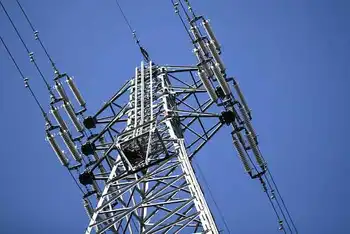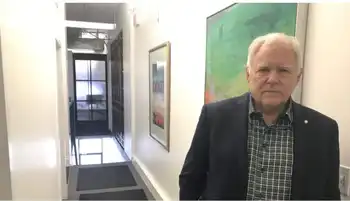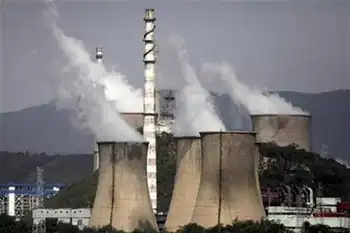Solar power projects face potential hurdles
By New York Times
High Voltage Maintenance Training Online
Our customized live online or in‑person group training can be delivered to your staff at your location.

- Live Online
- 12 hours Instructor-led
- Group Training Available
Here in the Mojave Desert, a dice throw away from the Nevada border, giant road graders and a small army of laborers began turning the dirt for BrightSource EnergyÂ’s $2 billion Ivanpah project, the first large-scale solar thermal power plant to be built in the United States in two decades.
The Ivanpah plant is the first of nine multibillion-dollar solar farms in California and Arizona that are expected to begin construction before the end of the year as developers race to qualify for tens of billions of dollars in federal grants and loan guarantees that are about to expire. The new plants will generate nearly 4,000 megawatts of electricity if built — enough to power three million homes.
But this first wave may very well be the last for a long time, according to industry executives. Without continued government incentives that vastly reduce the risks to investors, solar companies planning another dozen or so plants say they may not be able to raise enough capital to proceed.
“I think we’re going to see a burst of projects over the next two months and then you’re going to hear the sounds of silence for quite a while,” said David Crane, chief executive of NRG Energy, after he announced that his company would invest $300 million in the Ivanpah plant.
Solar developers depend on two federal programs to make their projects financially viable. The most crucial is a loan guarantee program, expiring next September, that allows them to borrow money on favorable terms to finance up to 80 percent of construction costs.
The other is the option to take a 30 percent tax credit in the form of a cash payment once a project is built. Although the tax credit does not expire until the end of 2016, the option to take it as a cash payment disappears this year, making it far less valuable to a start-up company that is just beginning to generate revenue.
With both Democrats and Republicans promising to rein in the federal budget, it is unclear whether lawmakers will extend the programs in any form. “That could stall a number of projects and even lead to the failure of some,” said Ted Sullivan, an analyst with Lux Research, a consulting firm in New York.
Yet no one in the desert here wants to think too much about those looming clouds.
“Ivanpah represents a transformational moment in our energy equation,” said John Woolard, BrightSource’s chief executive, who was joined Wednesday by Gov. Arnold Schwarzenegger of California and Interior Secretary Ken Salazar at Ivanpah’s groundbreaking. “It demonstrates that the U.S. can lead in the drive for renewable energy at scale by building the largest solar plant in the world with new technology.”
The eight California projects that are expected to break ground this year will turn 46 square miles of the desert into a futuristic landscape of mirrors, towers and solar dishes. State officials estimate the plants will create 8,000 jobs in a state with a 12.4 percent unemployment rate.
During its three years of construction, Ivanpah will employ as many as 1,000 laborers in a recession-scarred region.
“In the last year, I haven’t worked,” said Basilio Yniguez, a 36-year-old pipefitter and father of seven, as he helped build a holding pen last week for threatened desert tortoises on the Ivanpah site. “Thanks to the green thing going up, I’m working.”
The state is supporting the industry in part by mandating that California utilities get a third of their electricity from renewable sources by 2020.
“When you look at the raw number of kilowatt-hours we need, I don’t see how you get there without large central station solar projects,” said Pedro Pizarro, a top executive with Southern California Edison, one of the state’s largest utilities.
Unlike the photovoltaic panel systems found on rooftops, most of the new solar plants will use thousands of large mirrors to heat liquids to generate steam that drives conventional electricity-generating turbines.
“Without the Department of Energy coming in to assume a lot of the risk, you might not find lenders willing to lend, particularly if you’re a start-up with untried technology,” said Nathaniel Bullard, a solar analyst at Bloomberg New Energy Finance.
Other hurdles also stand in the way of the solar expansion. For some plants, multibillion-dollar transmission lines must be built to carry electricity from the desert to cities. Some environmentalists continue to oppose the projectsÂ’ impact on imperiled wildlife, like the desert tortoise, and may sue to stop construction.
The competitiveness of large-scale solar thermal plants in California also depends on the cost of natural gas, the stateÂ’s dominant source of electricity. According to Mr. Bullard, gas-fueled plants can produce electricity for about 10 cents a kilowatt-hour. After including the government subsidies, solar thermal plants are expected to generate power at 13 to 17 cents a kilowatt-hour, which the industry says is close enough in price to be competitive.
So far, Ivanpah is the only California solar thermal project to win a government loan guarantee, although other projects have applied and are awaiting decisions from the Energy Department.
“We are sensitive to the deadlines and are doing everything we can so that these projects can move forward,” said Jonathan Silver, the executive director of the department’s loan program. “There’s a significant demand for these funds.”
The uncertainty has left even some of the licensed solar projects in limbo.
Tessera Solar, based in Houston, has received federal approval to build two solar power plants that together would generate nearly 1,400 megawatts from 54,900 large solar dishes installed on 10,000 acres of government land. The company is seeking loan guarantees to help finance more than $4.6 billion in construction costs.
“This is a very significant amount of funding to secure in these tough markets,” Janette Coates, a Tessera spokeswoman, said in an e-mail. “The actual start of construction will depend on progress with both the D.O.E. loan guarantee process and the project equity process.”
Last month, Tessera suspended a much smaller project in Texas when it could not obtain private financing to build the 27-megawatt Marfa solar power plant.
Solar Millennium, a German developer, is seeking a $1.9 billion loan guarantee to build the first two phases of a 1,000-megawatt solar power plant that received federal approval.
Uwe T. Schmidt, chairman and chief executive of Solar Trust of America, Solar MillenniumÂ’s American division, said he expected work to begin in November on the $6 billion Blythe project, which will cover 11 square miles of the Southern California desert with long rows of parabolic mirrors.
Mr. Schmidt said that while Solar Millennium had found investors interested in financing the Blythe plant, the looming expiration of the cash grants would make it more difficult to finance future projects. “We’re seeing that the loan guarantee is an absolute necessity for building some of these larger projects,” he said.
Assisted by deep-pocketed backers like Bechtel, Google and Morgan Stanley, BrightSource seems determined to press forward with its 370-megawatt Ivanpah plant no matter what happens on the policy front.
Just recently, 30 biologists in green hard hats were methodically sweeping through the creosote bushes looking for desert tortoises. The animals must be relocated before the first of 347,000 mirrors the size of garage doors are installed around three 459-foot towers topped by water-filled boilers.
“Good projects will still move forward, but just not as many,” said Mr. Woolard.











